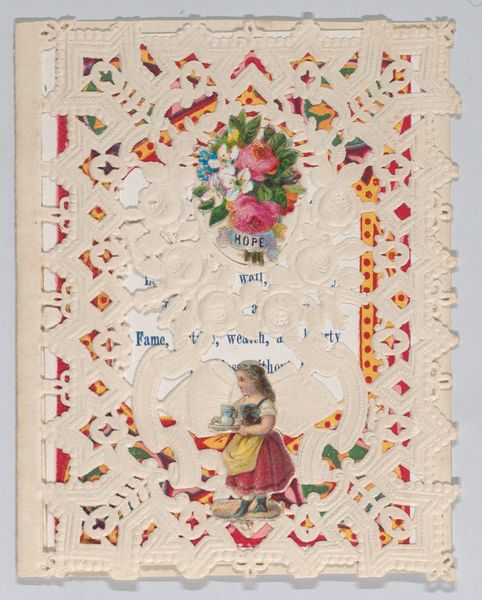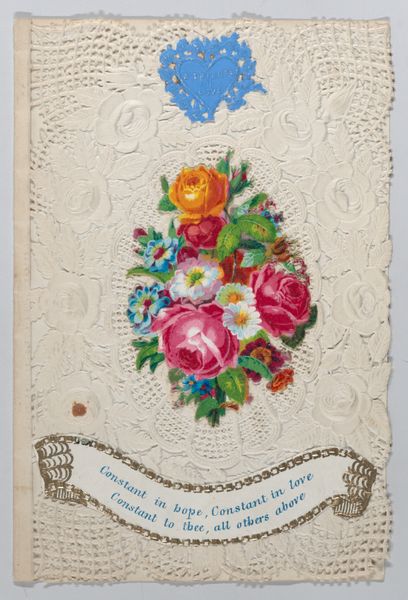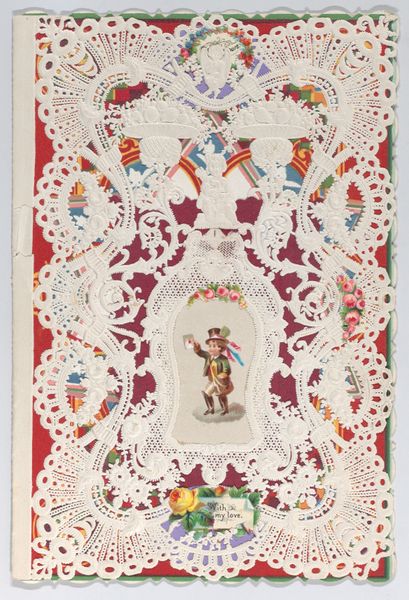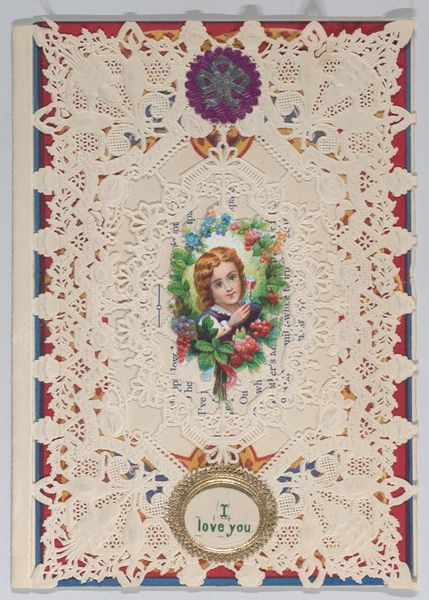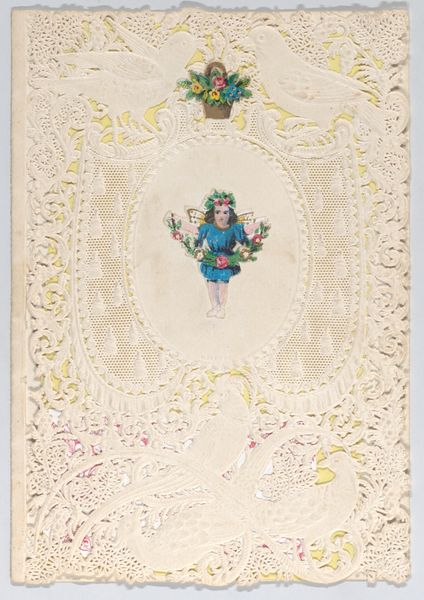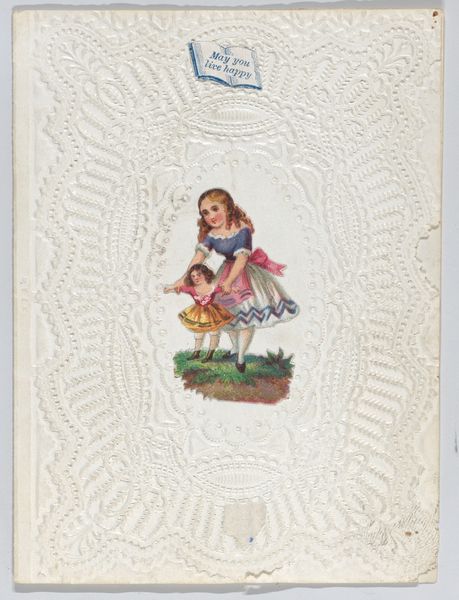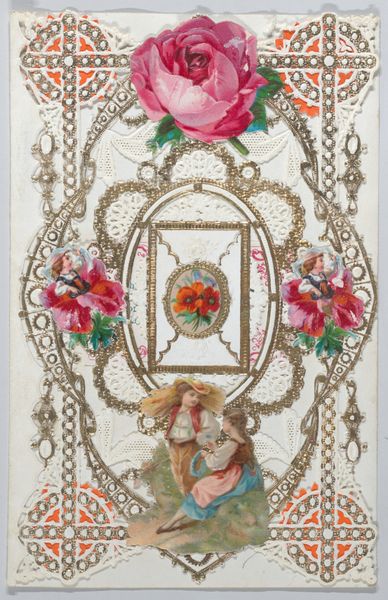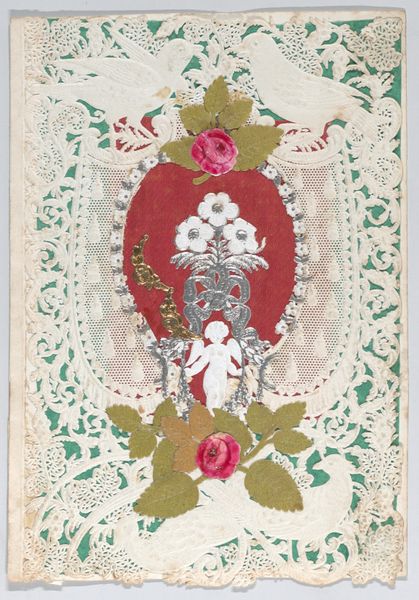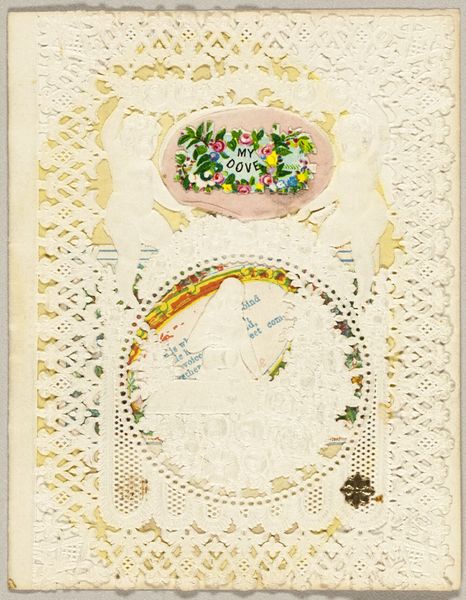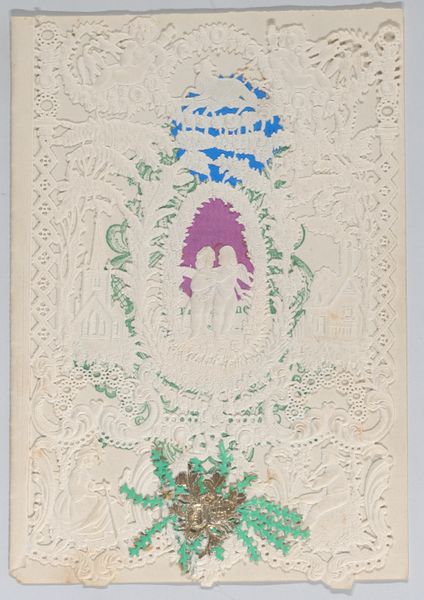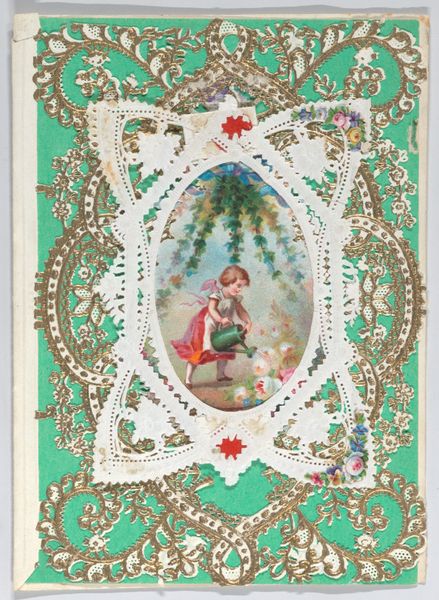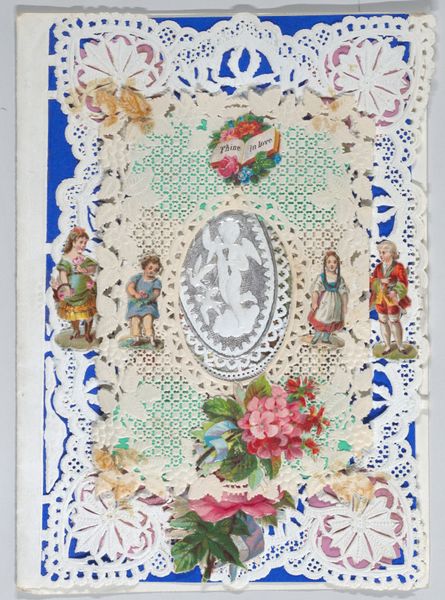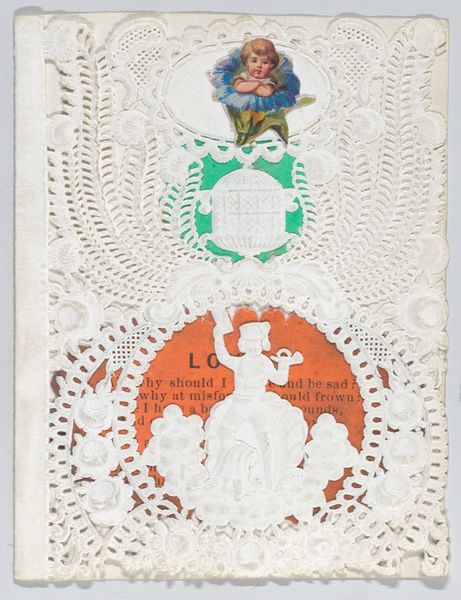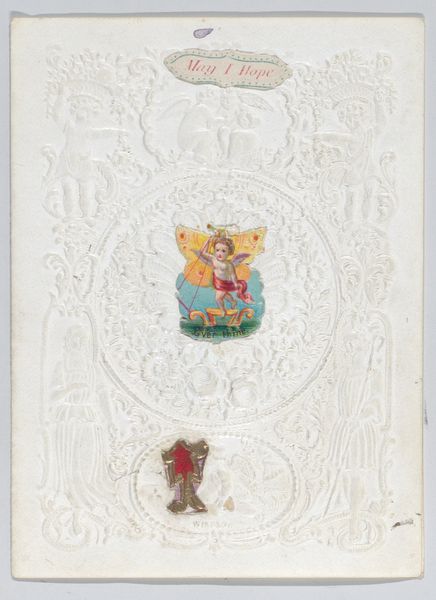
Dimensions: Width: 2 3/4 in. (7 cm) Length: 3 3/4 in. (9.5 cm)
Copyright: Public Domain
This small valentine, whose maker is now unknown, is made from paper lace and collage. It is an artifact of the nineteenth-century sentimental culture that surrounded the rise of mass media. The development of lithography and cheaper paper made sentimental tokens like these accessible to a wider public, standardizing the visual vocabulary of love, friendship, and mourning. The card features conventional visual codes: a central image of a woman, flowers, and a cupid figure, signifying love and beauty. Examining the institutional history of the period helps us understand the social function of the valentine. In an era defined by rigid social structures and courtship rituals, these cards offered a sanctioned means of expressing feelings, reinforcing existing social norms around gender and affection. To better understand this valentine, we might consult etiquette books or conduct archival research into the popular imagery and printing practices of the time. The meaning of this object is not inherent but is contingent on its original social and institutional context.
Comments
No comments
Be the first to comment and join the conversation on the ultimate creative platform.
